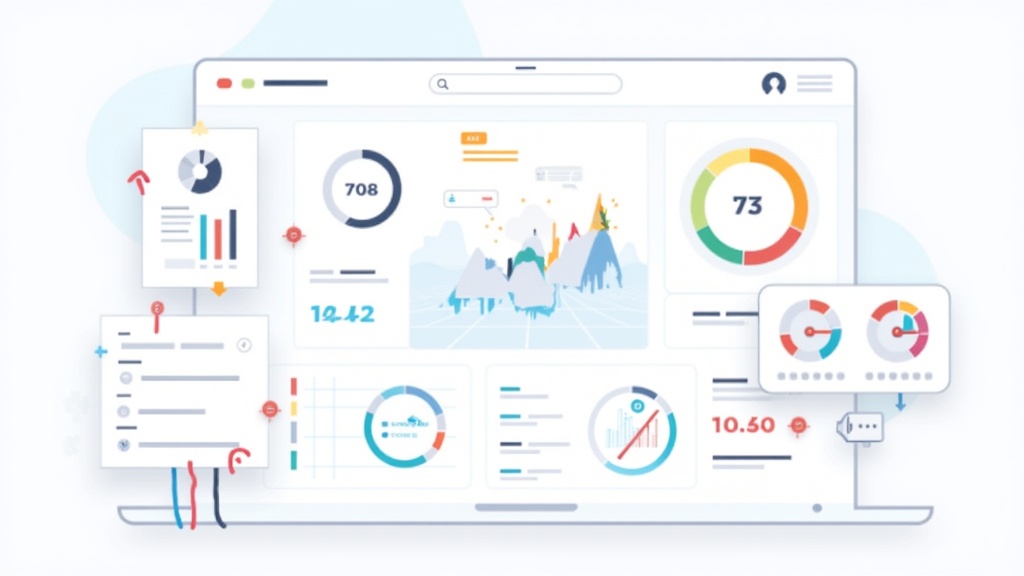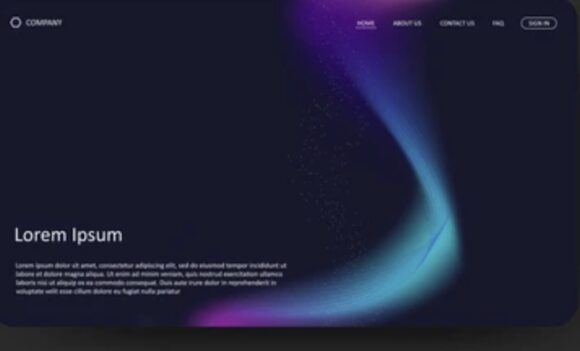If you’re wondering how to boost landing page load times, you’re in the right place. Fast loading pages keep visitors engaged and help your site perform better in search results. Slow pages, on the other hand, cause people to leave before even seeing what you offer. I know firsthand the impact speed has on conversions, bounce rates, and customer satisfaction. This guide covers practical landing page speed optimization tips, gets into landing page optimization for eCommerce, and shares fast landing page design tips you can use right away to make your site noticeably faster.
Loading speed isn’t just about how your site feels, it directly affects growth and revenue, especially for eCommerce. With shoppers expecting pages to load almost instantly, every second really counts. Even if you already have a nicely designed landing page, you can almost always squeeze a bit more speed out of it.
Here, I’ll break down exactly what you can do to boost load times, backed by hands-on experience and real examples. I’ll also share why each step matters, helping you understand both the basics and more advanced tweaks that actually move the needle.
Get Clear on Why Load Times Matter
Landing page load times affect your visitor experience, your SEO, and your sales. If your page takes more than a few seconds to load, many people simply move on, never to return. Slower load times also let your competitors win over your audience.
How Slow Load Times Hurt Your Site:
- Visitors get impatient and leave (higher bounce rates).
- Search engines rank you lower, meaning fewer visitors overall.
- Conversions drop, costing you leads or sales opportunities.
- On mobile, slow pages are even worse since people expect almost instant access.
The good news is that most slowdowns have clear causes, and you can address them without advanced technical skills. Focusing on speed also sends trust signals to both users and search engines. Neglecting page speed is like turning away potential customers at your door.
Research consistently shows that improving your load time even by a single second can increase conversions by several percent. That means more subscribers, signups, or sales—all by making your site faster. Whether you’re running a service site or an online shop, treating speed as a key design principle will pay off.
Analyze Your Current Landing Page Speed
The first thing I always do is measure the load time and identify what’s slowing things down. There are many free tools for this. Google PageSpeed Insights, GTmetrix, and WebPageTest.org give you a clear rundown of how your page performs and point out issues you might not see on your own.
Tools to Use:
What to Look For:
- Overall load time (aim for under 2 seconds if possible).
- Which files are biggest or take longest to load.
- Blocking issues, like third party scripts or huge images.
I usually run tests from different locations and devices. Sometimes a page loads fast in one spot and lags somewhere else, so check for your core markets. This helps create a fast landing page for every customer, not just those close to your server. If you serve worldwide visitors, running your page through a tool with location options provides valuable insight.
Choose Fast and Reliable Hosting
Your web host is the foundation for everything. If your hosting is slow, nothing else you do will matter as much. I’ve found that switching from shared hosting to a managed service often cuts seconds off load times, especially if you expect higher traffic or serve eCommerce customers.
What To Look For In a Host:
- Solid state drives (SSD) instead of old spinning drives.
- Data centers close to your main visitors (for better latency).
- Built in caching for WordPress or your site builder.
- Proven uptime and support; slow servers or frequent outages kill performance.
If your host offers one click scaling or built in security, that’s a plus for handling busy sales days or spikes in traffic. You don’t have to overspend for premium hosting at the start, but don’t go with the cheapest option if you want consistently fast landing pages. Making the right hosting choice from the start can prevent lots of headaches later.
Optimize and Compress Images for Speed
Images often take up most of your page weight. Huge photos or banners are one of the most common slow downs I see, especially on featurerich landing pages. That’s why adjusting image size and format makes a real difference, and fast landing page design tips always include image optimization near the top.
Practical Image Tips:
- Resize images before uploading (never use 2000px if 800px is enough).
- Use modern formats like WebP or AVIF for higher quality with lower file size.
- Compress images without much visible loss using free tools or plugins (like TinyPNG online, or ShortPixel for WordPress).
- Lazy load images, so only pictures on screen load first. This really helps on landing pages with lots of visuals, carousels, or testimonials with headshots.
Optimized images instantly make load speed better and make your site feel more responsive for every visitor. Remember, if you use background images or icons, optimize those too.
Limit and Optimize Third Party Scripts
Scripts from other companies, like chatbots, analytics, popups, or ad trackers, can quietly add seconds to your load time. If your page relies on lots of widgets, you might not realize how much they can slow things down. Reviewing and addressing unnecessary add ons is a speed hack worth its weight in gold.
How I Handle Third Party Tools:
- Remove unnecessary scripts by reviewing what each one actually does for you. If you’re not using a widget weekly, it probably shouldn’t be there.
- Load scripts only after the main content is visible. Many tools (like Google Analytics) have settings for this, and plugins can help with WordPress.
- Avoid using several similar services that do the same job. For example, don’t run two analytics platforms if you only check one.
- Where possible, replace heavy widgets with lightweight or server side alternatives.
I’ve seen major speed gains just from trimming down extra marketing scripts that weren’t delivering results. Ask yourself what each add on actually brings to your goals, and trim anything that no longer brings a return.
Cut Down on Heavy Fonts and Unused Styles
Fonts add personality, but they’re often hefty files that delay loading. The same goes for big website themes or unused style libraries (CSS). I always recommend sticking to one or two clear fonts, loading only the character sets you need. Simpler, cleaner typography usually keeps branding sharp and speeds up every page.
My Quick Font Tips:
- Only load the styles and weights you actually use (like Regular and Bold, not every option).
- Use system fonts (fonts preinstalled on most devices) when possible for maximum speed.
- If you do use Google Fonts, fetch them efficiently by combining requests or using the display=swap feature.
I also comb through my CSS files and remove anything not actually needed for the landing page. Website builders sometimes include unnecessary styles, which add up and can be deleted safely if you’re comfortable editing code or using a plugin. Even a quick scan for unused rules can shave off kilobytes and improve load times.
Use Caching and Content Delivery Networks (CDNs)
Caching saves static versions of your pages, so they load instantly for repeat visitors. CDNs (Content Delivery Networks) put your site’s content on servers all around the world, making it faster for people no matter where they are. These tools work hand in hand for excellent global speed.
Quick Steps I Take:
- Turn on browser caching with your host or a plugin (for WordPress, WP Rocket or W3 Total Cache are simple choices).
- Set up a reputable CDN—Cloudflare or Bunny.net both make this easy for beginners and pros alike.
- For eCommerce, work with your platform (like Shopify or WooCommerce) to make sure caching settings don’t break important cart or checkout features.
CDNs and caching offer some of the biggest speed benefits, especially if you have lots of international visitors or your main host is in another country. You’ll see improvements right away, even if all you do is turn on the defaults. Revisit your cache settings any time you update your pages or add new features—stale cache can cause newer images or styles not to appear right away.
Reduce Server Requests and Minimize Code
Every item your page loads, from scripts to stylesheets and images, increases the time it takes to be ready. Fewer files means faster loads. The same goes for smaller files, so minifying code (removing spaces and extra comments) can help a lot. If you use a website builder, check for built in tools to combine and minimize what you need.
How I Clean Up My Pages:
- Group multiple scripts and styles into single files when possible.
- Minify code using online tools or plugins (like Autoptimize for WordPress).
- Limit the number of plugins or addons; more isn’t always better.
- Look for opportunities to replace bloated widgets with built in features from your platform.
This approach isn’t just for developers; modern page builders and hosts offer simple toggles for many of these tweaks. Even if you don’t code, you can usually find settings in your dashboard to manage this.
Prioritize Above the Fold Content
Above the fold means what appears first on the screen before visitors scroll. Loading this content first makes your landing page feel lightning fast. Even if the rest takes another second, people can start reading or interacting without delay. Your strong first impression keeps people engaged.
What I Suggest Here:
- Use lazy loading for images and videos not shown up top.
- Keep the initial section simple—main message, call to action, and perhaps a hero image (optimized, of course).
- Make sure your stylesheets and key scripts for the top section load first.
This trick is especially useful for eCommerce landing pages where you want visitors to see a deal or product headline instantly. Above the fold clarity is one of the simplest wins for bounce rate improvements and speed.
Special Tips for eCommerce Landing Page Speed
Online shops face extra challenges with speed because they often show lots of images, reviews, recommended items, and payment widgets. Landing page optimization for eCommerce needs careful balancing between design and performance. Striking the right harmony helps convert visitors to buyers faster.
Extra Steps I Take for Shops:
- Use product image carousels carefully—only include them if they really help conversions.
- Minimize upsell popups or trust badges, and load them after the main content if possible.
- Test the speed of checkout and forms, not just the homepage. Buyers are lost if this part lags.
- Ensure mobile performance stays strong, as many shoppers use their phones to buy. Tiny delays can break trust in the buying process.
I regularly visit my own eCommerce landing pages on both mobile and desktop, testing how quickly a visitor can go from arrival to purchase. Sometimes, shaving off even half a second helps keep more potential buyers engaged all the way through checkout. A streamlined store brings higher conversion rates over time.
Fine Tune for Mobile Performance
Most visitors now come from mobile devices, so making your landing pages fast there is really important. Lower data speeds and weaker connections can make issues worse on phones, even if your site feels okay on desktop. Google also prioritizes speedy mobile experiences for search rankings.
Mobile Optimization Tips I Rely On:
- Keep mobile pages lightweight—fewer images and scripts, smaller fonts, and easy navigation.
- Use AMP (Accelerated Mobile Pages) or mobilespecific themes if your platform supports them.
- Test on real devices as well as emulators—sometimes menus or sliders work fine on a laptop, but bog down a phone.
I make a habit of loading landing pages on my own phone and even ask friends to do the same, just to spot slowdowns or design bugs early. Remember to check landscape and portrait layouts, as issues can appear only on certain orientations.
Test, Track, and Keep Improving Speed
Page speed isn’t a one time project. Any time you add a feature or image, swap out a plugin, or run a new campaign, you should re-test how the landing page performs. Regular checks help you spot hidden slowdowns and fix them fast, so your site’s performance keeps improving.
My Testing Workflow:
- Run a speed test before and after making any major change.
- Set up performance monitoring if your budget allows; this warns you when your landing pages slow down suddenly.
- Ask for feedback from real users who might see things you can’t.
I also keep a short checklist: run speed tests, compress images, trim plugins, and review analytics for bounce rates. Keeping an eye on these factors pays off over time and ensures your landing pages stay lightning fast, even as trends and tech keep changing. Your commitment to speed will set your site ahead of competitors who ignore it.
Common Questions & Quick Troubleshooting
My landing page is slow, even after doing these tips. What should I check first?
Start by testing your hosting speed. If server response time is high, no amount of tweaking can fix the base slowness. If your server is fine, check images and third party scripts again; one oversized image or slow widget can ruin your work. Disabling unused plugins one by one can also reveal hidden slowdowns.
How do I keep my landing page fast during big sales or spikes in traffic?
- Use a host that automatically scales resources when you get traffic spikes.
- Make sure caching and your CDN are active before the sale or event.
- Temporarily hide non essential widgets or popups that aren’t needed during busy times. This helps keep performance high.
Do page builders and templates slow down landing pages?
Some page builders add extra code, but most modern ones are fast if you use them cleanly. Avoid stacking multiple templates or heavy third party plugins. Stick to simple designs, limit animations, and always preview what your page looks like with guest tools and in private browsing to catch issues early.
Final Steps and What to Try Next
Improving landing page load times is worth it for every website, whether you run a personal blog or an eCommerce shop. From compressing images to using caching and trimming scripts, these changes add up fast. Keep refining, keep testing, and make page speed a regular part of your website routine. Remember, speed directly supports your SEO, sales, and reputation.
Your Action Plan:
- Test your current landing page speed and note problem areas.
- Pick one or two improvements—like compressing images or setting up a CDN—and apply them today.
- Check your site across devices and ask for feedback, especially from visitors you trust.
I’ve seen dramatic improvements for myself and clients just by paying close attention and making a few smart tweaks. A fast landing page not only helps your visitors but also boosts your confidence knowing your site performs at its best. Bottom line, page speed is one of the most important investments in your website’s future.









Super useful guide. I learned the hard way after a site crash that speed wins: moving to managed hosting, killing extra scripts, and switching images to WebP cut my load time in half. My take is to fix hosting and images first, then add a CDN. Question: for a non-tech beginner, what are your top two quick wins today? As we say in Africa, “If you think you’re too small to make a difference, try spending the night with a mosquito.”
— John Monyjok Maluth
Thanks so much, John — that’s a powerful insight (and a great proverb ????). You’re absolutely right: hosting and images are often the biggest speed levers.
For a non-tech beginner, my top two quick wins would be:
Use an image optimizer plugin or tool (like TinyPNG or ShortPixel) to automatically compress and convert images to WebP.
Install a lightweight caching plugin (like WP Rocket or LiteSpeed Cache) — it’s mostly “set and forget” but makes a big impact.
Those two steps alone can make a site feel twice as fast with minimal effort.
This is a fantastic, no-nonsense guide! Page speed is one of those things that’s easy to ignore until you see your bounce rate skyrocket. Your breakdown of image optimization and leveraging browser caching is spot-on—these are often the lowest-hanging fruit for a major performance boost. Thanks for putting together such a clear and actionable checklist!
Thank you so much! You’re absolutely right — page speed tends to fly under the radar until it starts hurting engagement and conversions. I’m glad the optimization tips hit the mark; image compression and caching really do make a huge difference with relatively little effort. Appreciate you taking the time to read and share your thoughts!
I never realized that there are so many factors involved in slowing down the loading time of your websites. I was wondering as the website gets bigger over time if this also impacts the load time, or does the website loading only focus on the page the visitor is asking to see?
I think this is something that needs to be constantly checked, as I find that sometimes my pages load faster than at other times. I am going to make a copy of this list of things to check, as some of them I was not aware of.
Thanks for this.
I’m glad you found the information helpful!
You’re absolutely right — as a website grows, it can definitely impact loading times, especially if new pages include large images, extra scripts, or plugins that load site-wide. While browsers typically load only the specific page a visitor requests, many background elements (like stylesheets, JavaScript files, and fonts) are shared across the entire site, so a larger or more complex site can slow things down overall.
It’s great that you’re planning to keep an eye on it — regular performance checks are one of the best habits you can have! Even small tweaks can make a big difference in keeping your site fast and user-friendly.
Thanks again for your thoughtful comment!